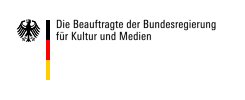53°51'04.0"N 9°72'96.5"E
The Museum Estebrügge
The crafts in the Altes Land have been able to develop independently of the banal rights of the craftsmen's offices in the neighbouring towns of Stade and Buxtehude since the 17 th century.
In 1861, the share of craftsmen in the population with 3.5 workshops per 100 inhabitants came close to the ratio of 4.3 master craftsmen per 100 inhabitants that existed in the city of Stade, while their share in the entire Kingdom of Hanover averaged almost only 1/3 of the share that craftsmen had in the population of the cities.
If a great emphasis was placed on the design of the house, a lot of money was also spent on the interior furnishings. Altländer furniture has been preserved in large numbers, especially trunks, but also chest benches, chairs and, as a special feature, the so-called Hamburg Schapp, a Baroque cupboard, can be found in museums and private houses.
A unique, splendid, self-confident peasant culture was developed in the Altes Land. Traditional costumes decorated with intricate filigree and artistically turned furniture are still preserved and produced today.
The Cultural Foundation Altes Land operates the Museum Estebrügge
In 1992 Gerd Matthes established the museum on the ground floor at Steinweg 7 in Jork-Estebrügge as a small private museum. The collection contains valuable exhibits from the cultural history of the Altes Land, in particular Altländer filigree jewellery, cutlery and other silversmith's products, ceramics, clothing, furniture as well as paintings and graphics with regional themes.
After Gerd Matthes' death in 2013, the exhibition was redesigned by Dr Frank Schlichting.
Since then, the Cultural Foundation sponsors the museum.
Opening hours of the Museum Estebrügge:
April to October: open on Sundays 2 pm - 5 pm
Museum Estebrügge, Steinweg 7, 21635 Jork-Estebrügge
Guided tours are possible by prior arrangement.

